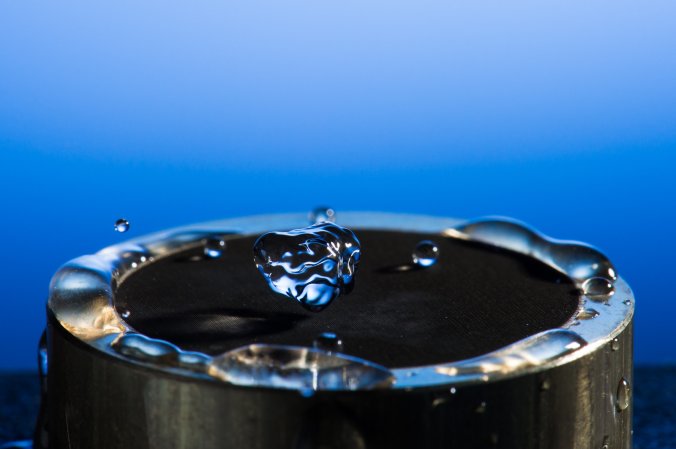

The initial fallout from a chemical or radiological attack would be devastating enough, but the cleanup of such an incident would be equally hazardous. While HAZMAT teams and other authorities have methods of scrubbing radiological and chemical waste, the porous nature of building materials like concrete gives radionuclides and dangerous chemical agents plenty of places to hide from conventional cleanup methods. So a team of chemists at Idaho National Laboratory is experimenting with a battery of laser treatments that can neutralize threats no matter how deep within our infrastructure they burrow.
In the case of a dirty bomb attack, the immediate response would be to evacuate the area and “chelate” any affected surfaces – that’s the scrubbing you’ve seen HAZMAT types performing on contaminated surfaces. But chelation can only render inert what it can touch; radioactive particles that find their way into cracks and pores in concrete or asphalt can elude surface scrubbing only to reappear later.
So the INL researchers looked into ways to probe deeper into porous surfaces, and found a solution in an old friend: H2O. Water can get into those same cracks and pores where radionuclides hole up; cleanup crews can then blast the area with laser pulses that turn that water into steam, carrying the contaminants right back to the surface just as a steam cleaner pulls unwanted materials out of a carpet.
The team employed a similar approach to smoking chemical agents like VX nerve gas, sarin, and mustard gas out of their holes. Conventional methods of cleaning up these agents can be pretty harmful and time consuming themselves; bleach solutions work, for example, but they in turn must be cleaned up, exacerbating the environmental and economic toll of the contamination.
But a series of tests currently underway has shows that ultraviolet wavelength lasers can decontaminate surfaces exposed to mustard and VX gases either by photochemically blasting apart chemical bonds or by photothermally heating particles until they degrade or simply fall apart. INL researchers are looking into using the technique on other chemical agents, many of which are susceptible to at least one of those two laser attacks. The team is also contemplating using microwaves to create heat radiation deep within porous materials to push deeply rooted chemical agents to the surface, much as they did when “steam cleaning” radioactive contaminants.
Once offending agents are at the surface, cleanup crews can simply blast them with lasers to render them inert, meaning life in affected areas can return to normal more quickly and with less chemical fuss. The technology is still in its infancy, but HAZMAT teams of the future may be trading in their bio-suits and chemical sprays for remotely controlled robotic crews packing serious laser heat.







